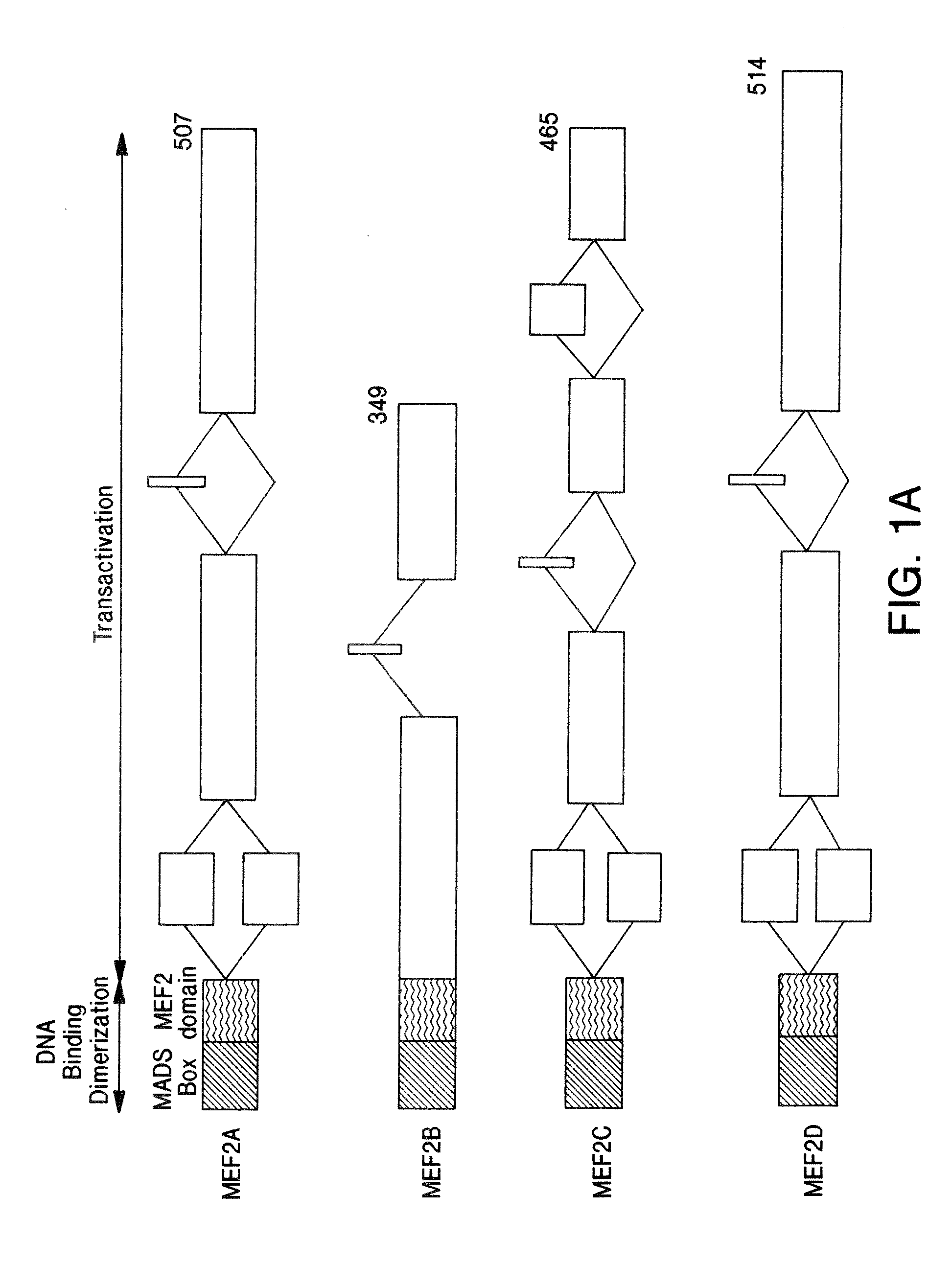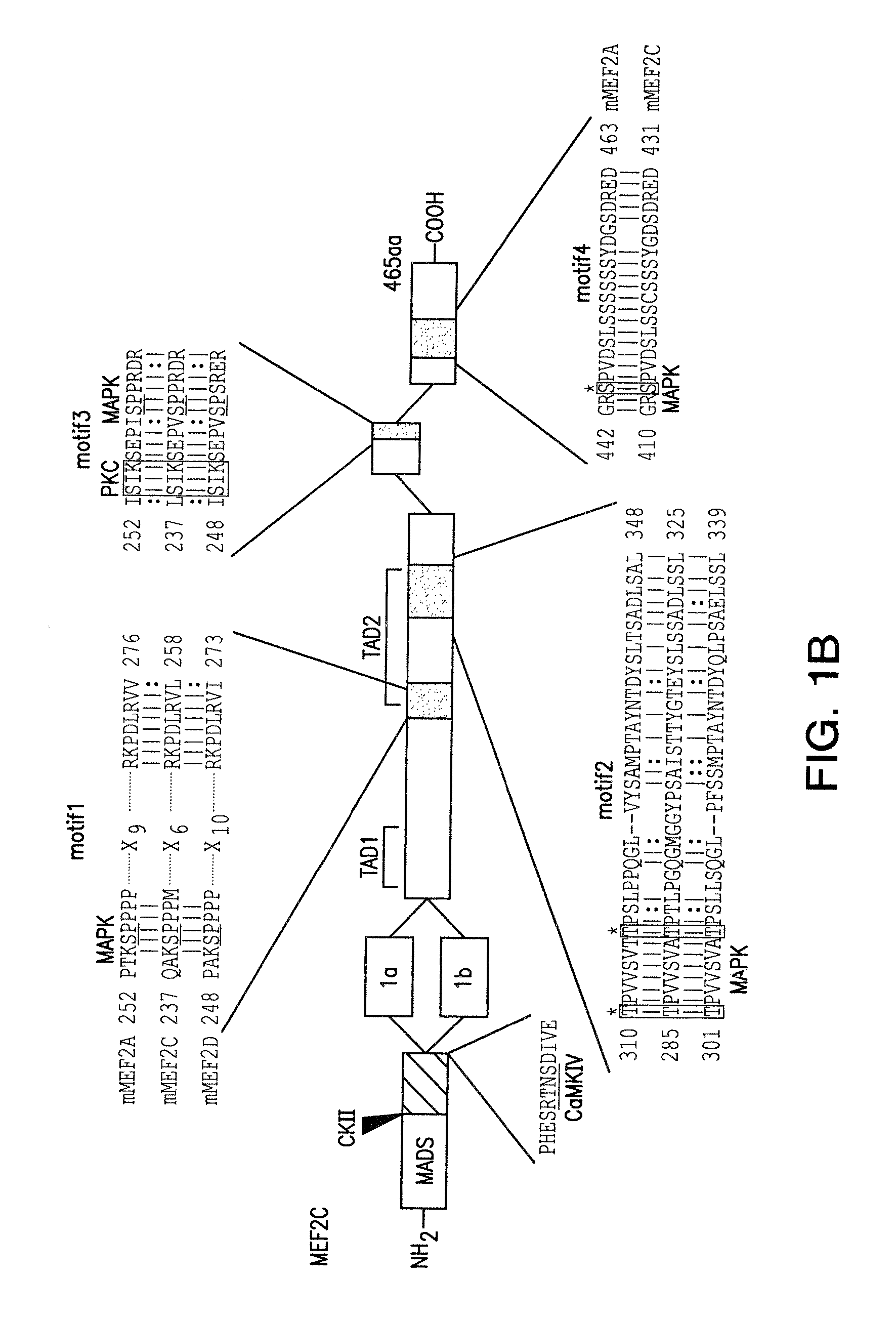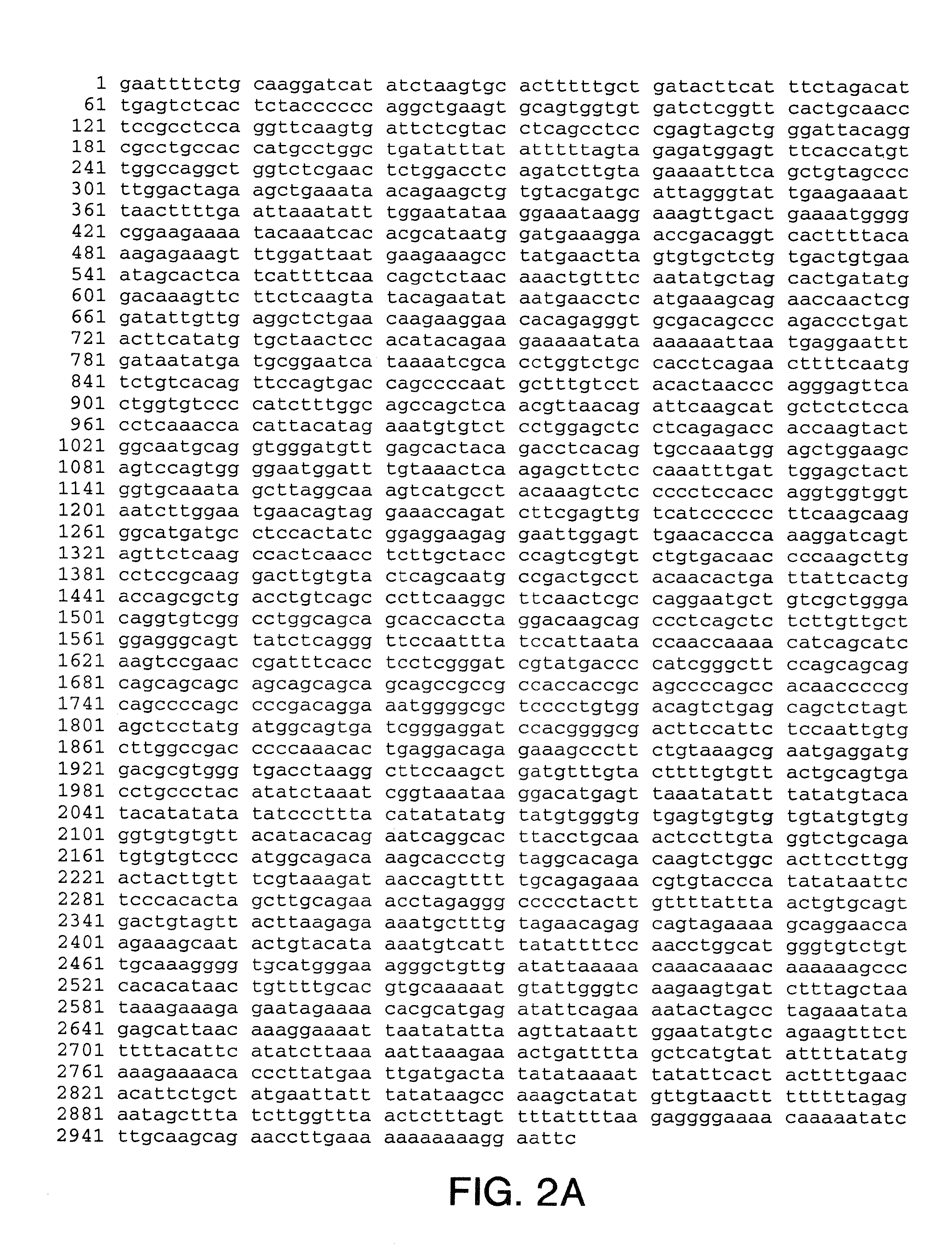Methods of differentiating and protecting cells by modulating the p38/mef2 pathway
a p38/mef2 pathway and cell technology, applied in the field of neuronal cell transplantation, can solve the problems of speech impairment and coordination loss, lack of effective therapies or cures, and reduced effect of l-dopa treatmen
- Summary
- Abstract
- Description
- Claims
- Application Information
AI Technical Summary
Benefits of technology
Problems solved by technology
Method used
Image
Examples
example i
Induction of MEF2 Expression in P19 Cells
[0129]This example demonstrates that retinoic acid induces MEF2 protein expression in P19 embryonic carcinoma cells.
[0130]P19 embryonal carcinoma cells terminally differentiate into neuronal cells after retinoic acid treatment, and the process of neurogenesis in P19 cells is similar to that of the mammalian central nervous system (McBurney, Int. J. Dev. Biol. 37:135-140 (1993) and Bain et al., Bioessays 16:343-348 (1994)). Moreover the apoptotic cell death observed in neuronally-differentiating P19 cells parallels that seen in the fetal brain (Slack et al., J. Cell Biol. 129:779-788 (1995); Mukasa et al., Biochem. Biophys. Res. Commun. 232:192-197 (1997); Blaschke et al., Development 122:1165-1174 (1996); Jacks et al., Nature 359:295-300 (1992); and Kuida et al., Nature 384:368-372 (1996)).
[0131]MEF2, especially MEF2C, is expressed during neurogenesis in the rodent cerebral cortex (Leifer et al., Proc. Natl. Acad. Sci. USA 90:1546-1550 (1993)...
example ii
Overexpression of MEF2C in P19 Cells
[0135]These results indicate that stable overexpression of MEF2C transforms p19 cells into a mixed neurogenic / myogenic phenotype expressing neurofilament as well as the myosin heavy chain.
[0136]P19 cells exposed to DMSO develop into myogenic cells while P19 cells exposed to retinoic acid develop along a neurogenic pathway (McBurney, M. W., Int. J. Dev. Biol. 37:135-140 (1993)). To examine the potential role of MEF2C in the differentiation process, MEF2C was overexpressed in stable transformants of undifferentiated P19 cells in the absence of retinoic acid or DMSO. Undifferentiated P19 cells lacked immunoreactivity with MEF2C and also lacked neurofilament (FIG. 6E). MEF2C-transfected cells expressed MEF2C protein in the nucleus, as determined by specific antibody labeling, and were neuronal in character as evidenced by labeling with anti-neurofilament. All transfected cells (from over 200 such cells scored) expressed MEF2C, stained with anti-neurof...
example iii
Characterization of P19 Clones Stably Expressing a Dominant Negative Form of MEF2
[0140]This example describes the characterization of P19 clones in which MEF2C function is inhibited.
[0141]The role of endogenous MEF2 proteins in retinoic acid-induced neuronal differentiation of P19 was analyzed using a dominant negative form of MEF2. MEF2 proteins are functionally divided into two regions. The N-terminal region (containing the MADS and MEF2 domains) is responsible for specific DNA binding activity, while the C-terminal region is necessary for transcriptional activity (Martin et al., Mol. Cell. Biol. 14:1647-1656 (1994), and Molkentin et al., Mol. Cell. Biol. 16:2627-2636 (1996)). Since the MADS and MEF2 domains alone lack transcriptional activity, the N-terminal region of MEF2 acts as a dominant negative construct (Martin et al., Mol. Cell. Biol. 14:1647-1656 (1994)). Dominant negative MEF2 has been shown to inhibit myotube formation in myoblastic cell lines (Ornatsky et al., J. Biol...
PUM
| Property | Measurement | Unit |
|---|---|---|
| diameter | aaaaa | aaaaa |
| pH | aaaaa | aaaaa |
| diameter | aaaaa | aaaaa |
Abstract
Description
Claims
Application Information
 Login to View More
Login to View More - R&D
- Intellectual Property
- Life Sciences
- Materials
- Tech Scout
- Unparalleled Data Quality
- Higher Quality Content
- 60% Fewer Hallucinations
Browse by: Latest US Patents, China's latest patents, Technical Efficacy Thesaurus, Application Domain, Technology Topic, Popular Technical Reports.
© 2025 PatSnap. All rights reserved.Legal|Privacy policy|Modern Slavery Act Transparency Statement|Sitemap|About US| Contact US: help@patsnap.com



